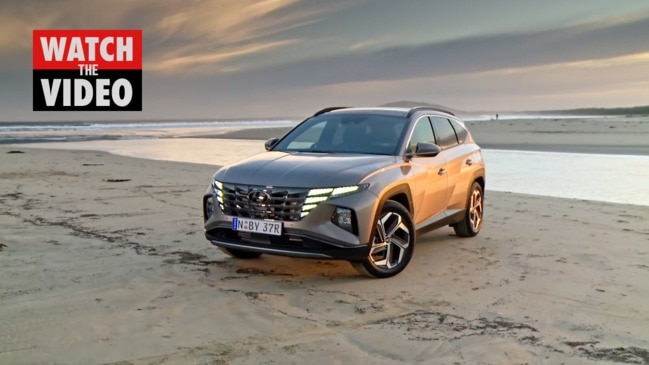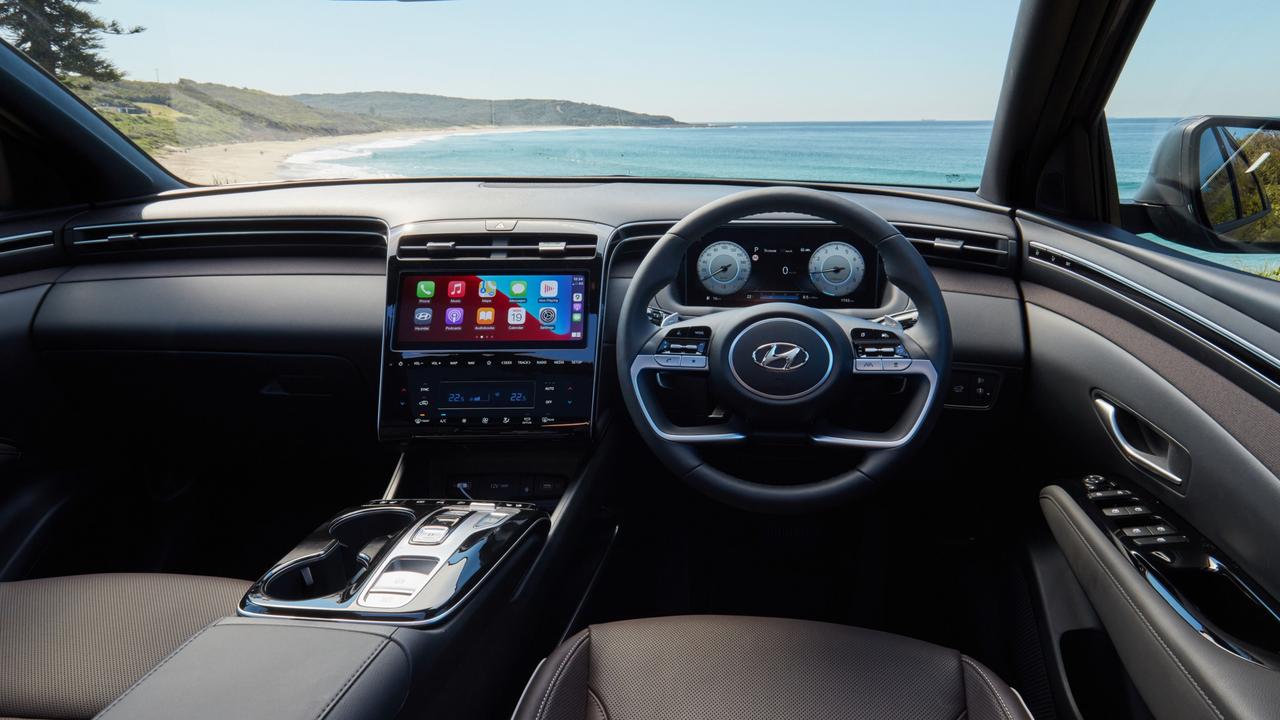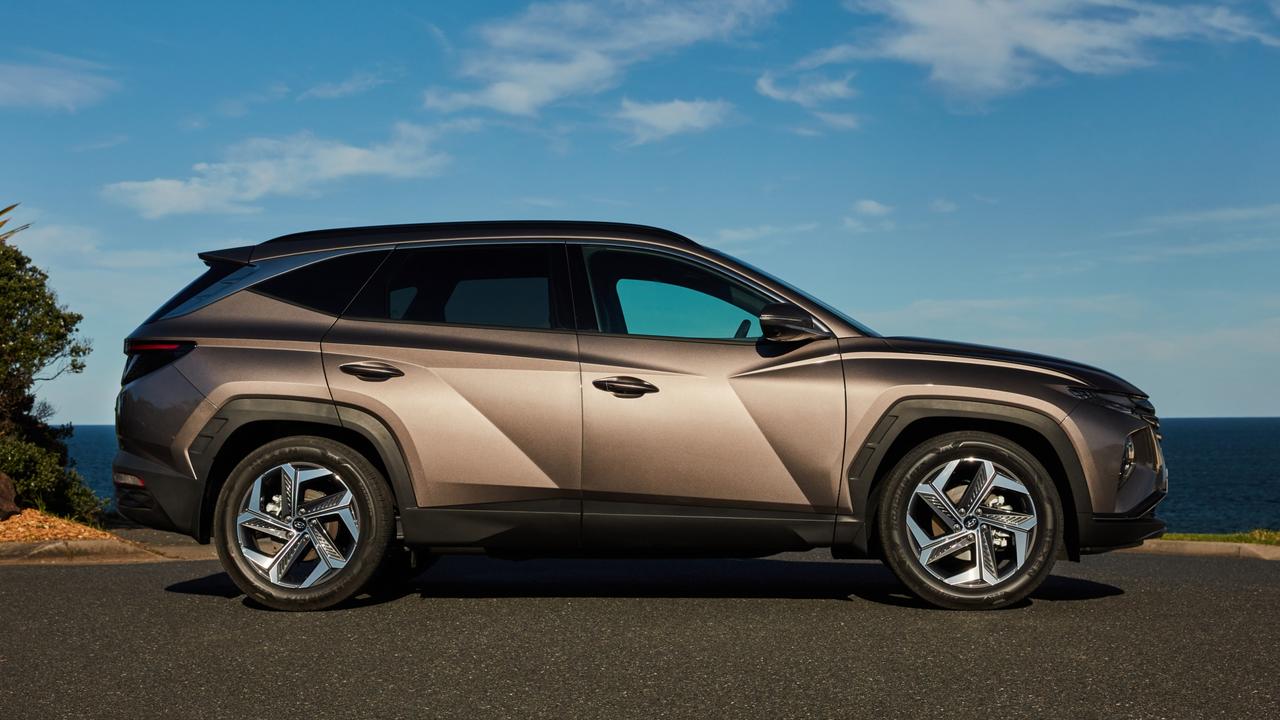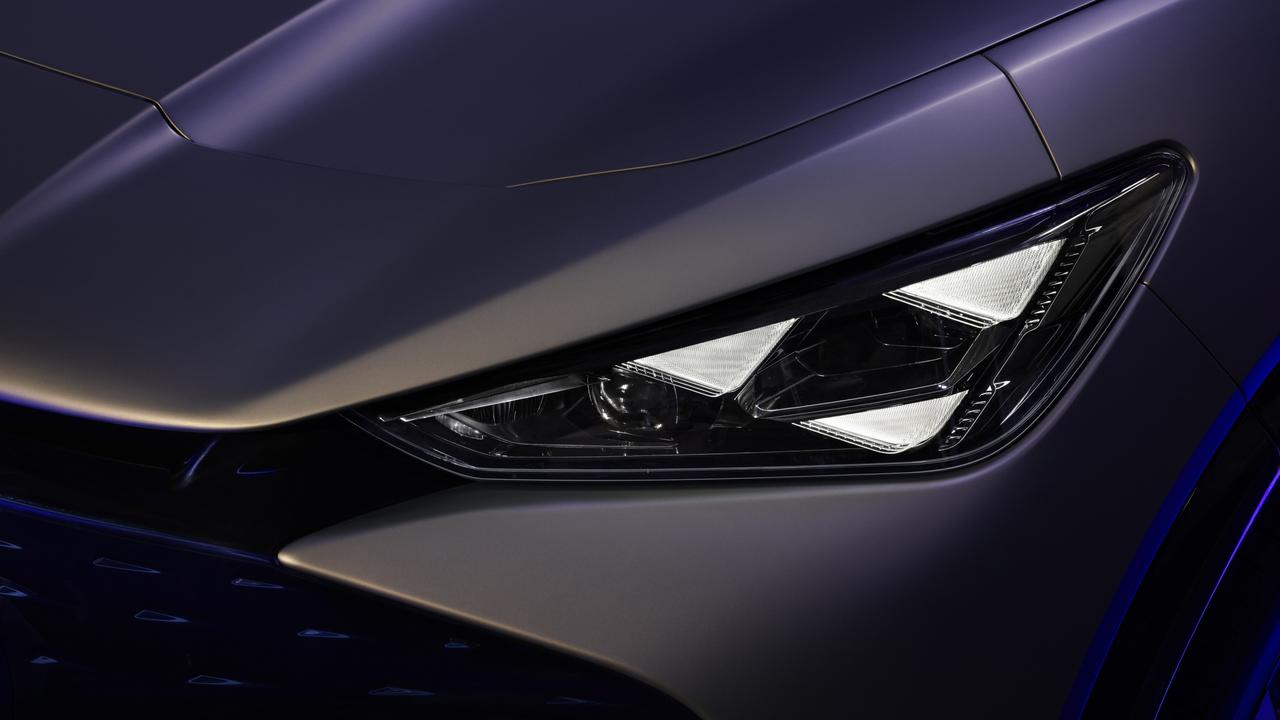2021 Hyundai Tucson Highlander Turbo review
The South Korean brand’s long-awaited new family SUV has arrive in Australia bringing turbo power and head-turning looks.

Hyundai has added a 1.6-litre turbo engine to its Tucson line-up.
It joins the 2.0-litre four-cylinder petrol unit available on cheaper models.
Despite its smaller capacity, the engine is the more powerful of the two, delivering 132kW and 265Nm, compared with 115kW/192Nm for the 2.0-litre.
Accompanying the extra thrust is a different transmission; gone is the traditional six-speed auto, replaced by a seven-speed dual-clutch unit. While the 2.0-litre engine is available across the three-pronged Tucson range – basic Tucson, mid-grade Elite and flagship Highlander – the 1.6 is available only in Elite or Highlander trim.

It also comes with all-wheel drive traction and an associated price premium of about $4300 over 2.0-litre front-drive Tucsons.
We’ve tested the most expensive Highlander, which costs almost $55,000 on the road.
Accompanying the top-shelf price tag is a lengthy list of gear that incorporates leather, a panoramic sunroof, digital instrument cluster, ventilated front seats, heated front and rear seats, a heated steering wheel, ambient lighting, a 360-degree camera and a powered tailgate that you can open with a swipe of your foot.
An eight-speaker Bose sound system, digital radio tuning and Apple CarPlay/Android Auto hooked to an 8-inch centre screen take care of in-car entertainment.

But in an odd twist of product planning, the Highlander doesn’t have the wireless smartphone mirroring available on the cheapest model.
Touchpads replace buttons to create a clean aesthetic but in some instances they are a step back in functionality.
There are also styling tweaks, including a darkened glossy grille and a silver lower skid plate to infuse a rough-and-ready look. On the Highlander, there are 19-inch wheels and a full-size spare. The 1.6-litre engine is more relaxed than the 2.0-litre, its wide spread of torque from low in the rev range delivering useful thrust.

It’s far from fiery – upper revs yield more noise than potency – but it throws the Tucson in the mix with rivals such as the Toyota RAV4 and Mazda CX-5.
And while it doesn’t temporarily shut down the engine when the car is stationary, the 1.6 is a more efficient unit. Claimed fuel use drops to 7.2 litres per 100km, about 11 per cent better than the 2.0. The fuel savings are more pronounced around town, where the turbo uses 20 per cent less fuel than the bigger engine.
It achieves that using regular unleaded, a plus in a market that is increasingly turning to the more expensive premium brew.

All-wheel drive also makes for more confident takeoffs, especially on a greasy road. The active system quickly apportions torque to where it can do its best work.
Less impressive is the twin-clutch transmission, at least in parking situations, where it can hesitate to engage. It’s more convincing on the run, although there’s an occasional laziness and the odd clumsy downshift. Owners can choose from different drive modes that tweak throttle and transmission responses; choosing “Sport” ups the throttle sensitivity and drops into lower gears sooner, for example. We found the “Smart” setting got things right most of the time, adapting to our driving style. The Highlander’s 19-inch tyres hang on well and despite their lower profiles, they deal with bumps commendably, with a focus on comfort.

Steering isn’t particularly sharp, requiring a decent twirl for the desired result, but the car’s responses are reassuringly predictable, with a focus on smothering imperfections.
It adds up to a family SUV that’s competent and composed but more at home in the suburbs than a snaking mountain pass.
VERDICT 3.5/5
A solid effort. Hyundai charges a sizeable premium for the 1.6-litre turbo but rewards buyers with superior efficiency, all-paw traction and better performance.
HYUNDAI TUCSON HIGHLANDER 1.6-LITRE TURBO VITALS
Price: About $54,600 drive-away
Warranty/servicing: 5 yrs/unlimited km, $1675 for 5 yrs/75,000km
Safety: 7 airbags, autonomous emergency braking, blind-spot warning, driver attention monitor, lane-keep assist, 360-degree camera, rear cross-traffic alert
Engine: 1.6-litre 4-cylinder turbo, 132kW/265Nm
Thirst: 7.2L/100km
Spare: Full-size
Boot: 539 litres



